Abstract
Anaerobic digester sludge fed 5,300 mg of acetate per liter, 3.4 microM pentachlorophenol, and nutrients for 10 days biotransformed pentachlorophenol by sequential ortho dechlorinations to produce 2,3,4,5-tetrachlorophenol and 3,4,5-trichlorophenol. Upon acclimation to 3.4 microM pentachlorophenol for 6 months, the methanogenic consortium removed chlorines from the ortho, meta, and para positions of pentachlorophenol and its reductive dechlorination products. Pentachlorophenol was degraded to produce 2,3,4,5-tetrachlorophenol, 2,3,4,6-tetrachlorophenol, and 2,3,5,6-tetrachlorophenol. Dechlorination of 2,3,4,5-tetrachlorophenol produced 3,4,5-trichlorophenol, which was subsequently degraded to produce 3,4-dichlorophenol and 3,5-dichlorophenol. 2,3,4,6-Tetrachlorophenol was dechlorinated at the ortho and meta positions to produce 2,4,6-trichlorophenol and 2,4,5-trichlorophenol. 2,3,5,6-Tetrachlorophenol yielded 2,3,5-trichlorophenol, followed by production of 3,5-dichlorophenol. 2,4,6-Trichlorophenol was degraded to form 2,4-dichlorophenol, and 2,4,5-trichlorophenol was dechlorinated at two positions to form 2,4-dichlorophenol and 3,4-dichlorophenol. Of the three dichlorophenols produced (2,4-dichlorophenol, 3,4-dichlorophenol, and 3,5-dichlorophenol), only 2,4-dichlorophenol was degraded significantly within 3 weeks, to produce 4-chlorophenol.
Full text
PDF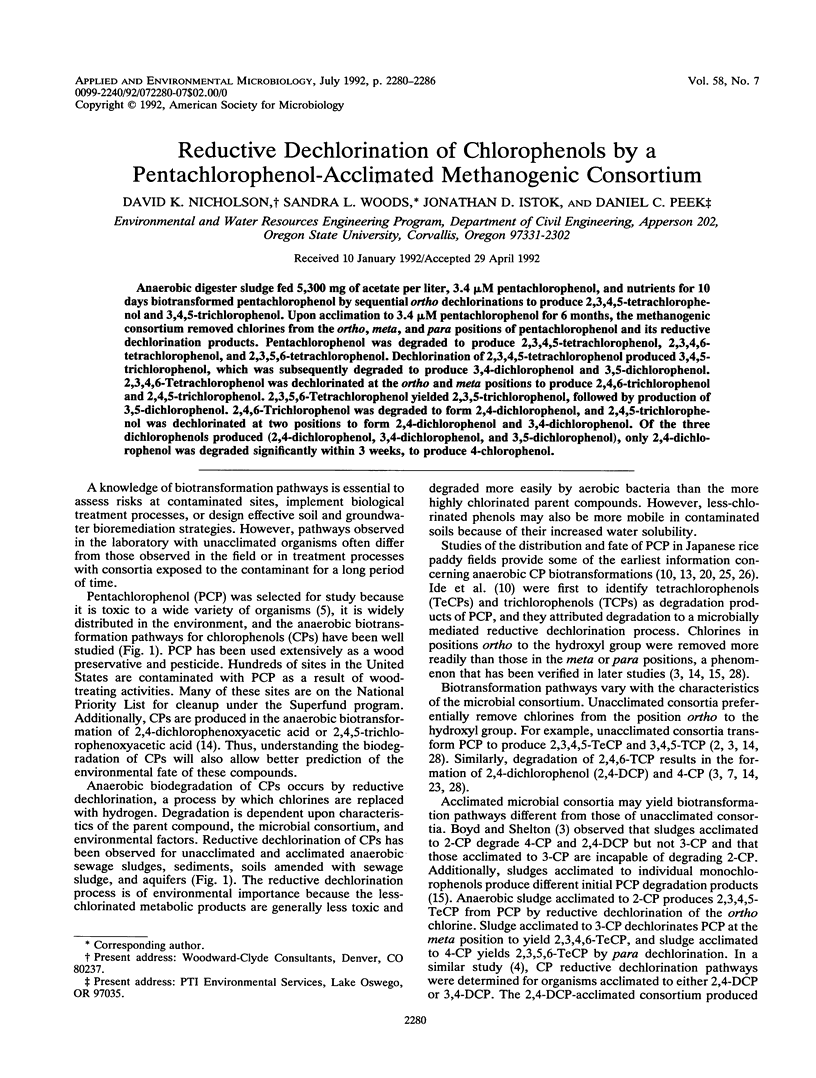

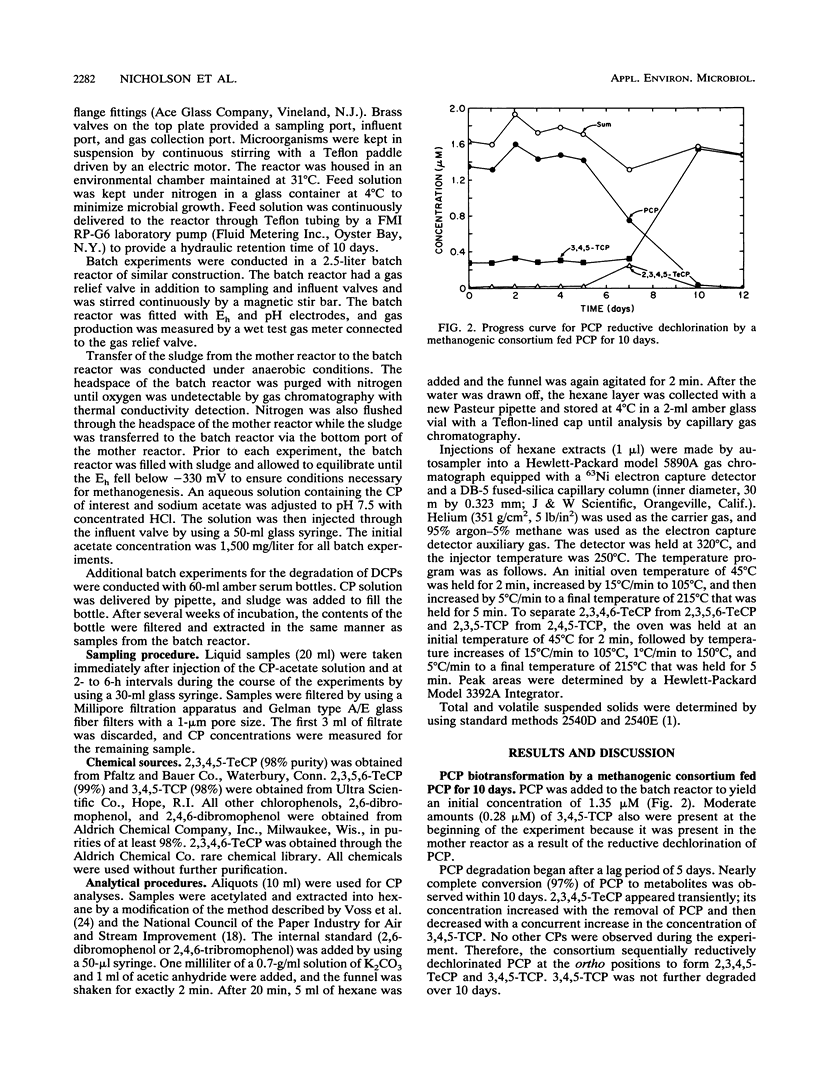
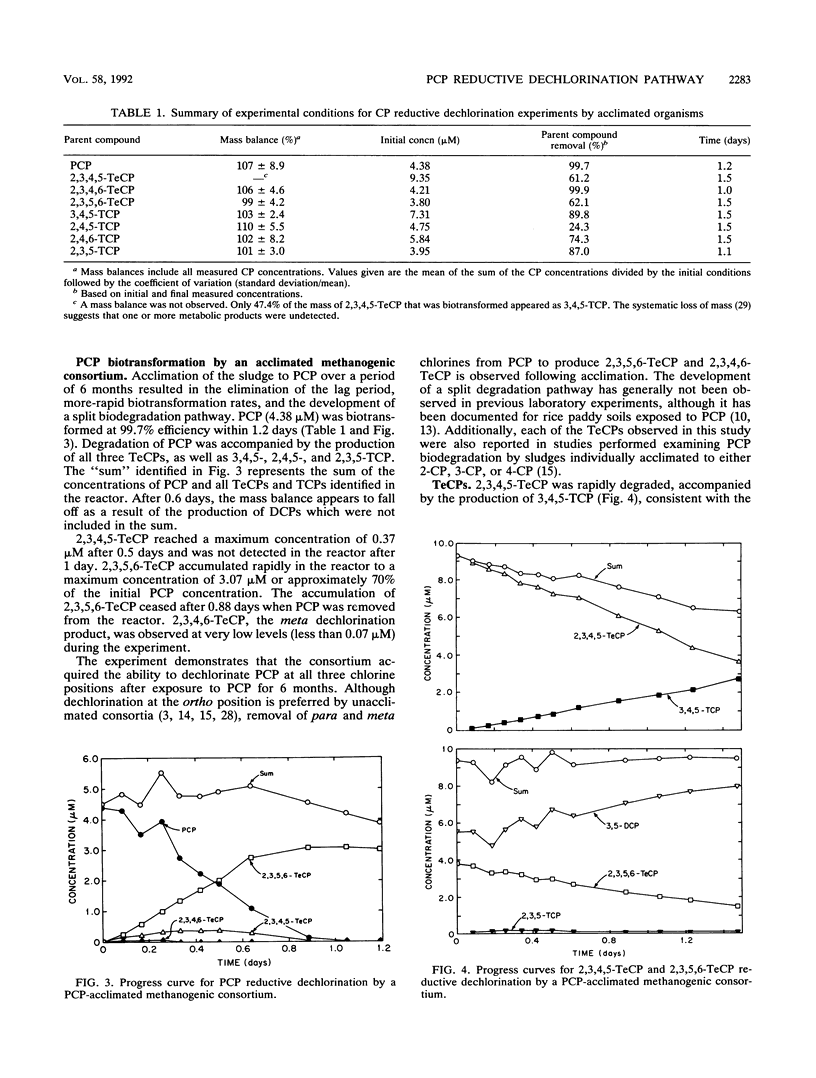
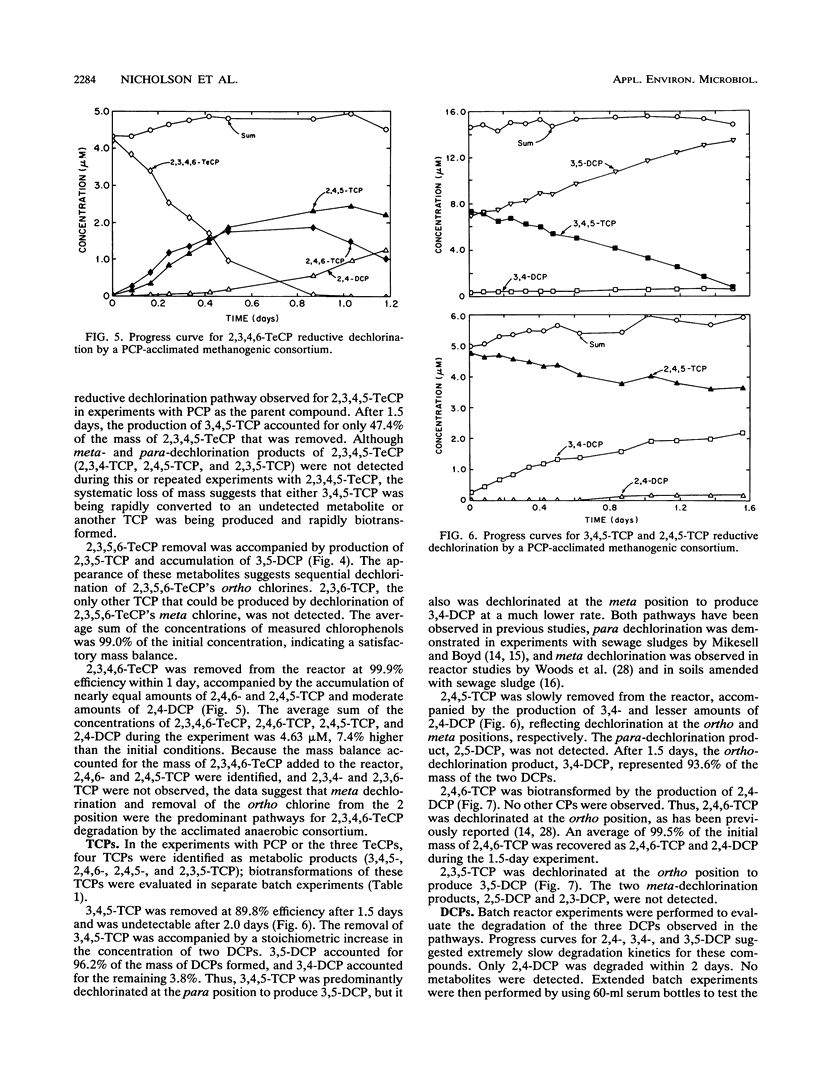
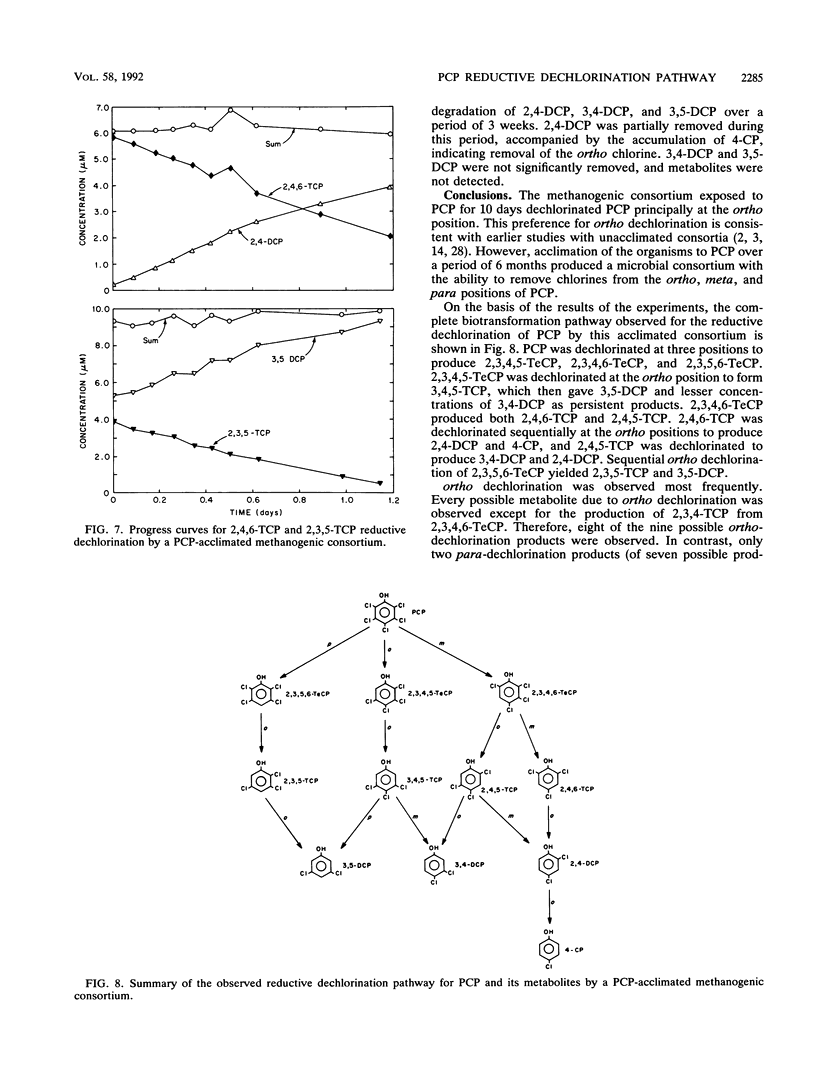
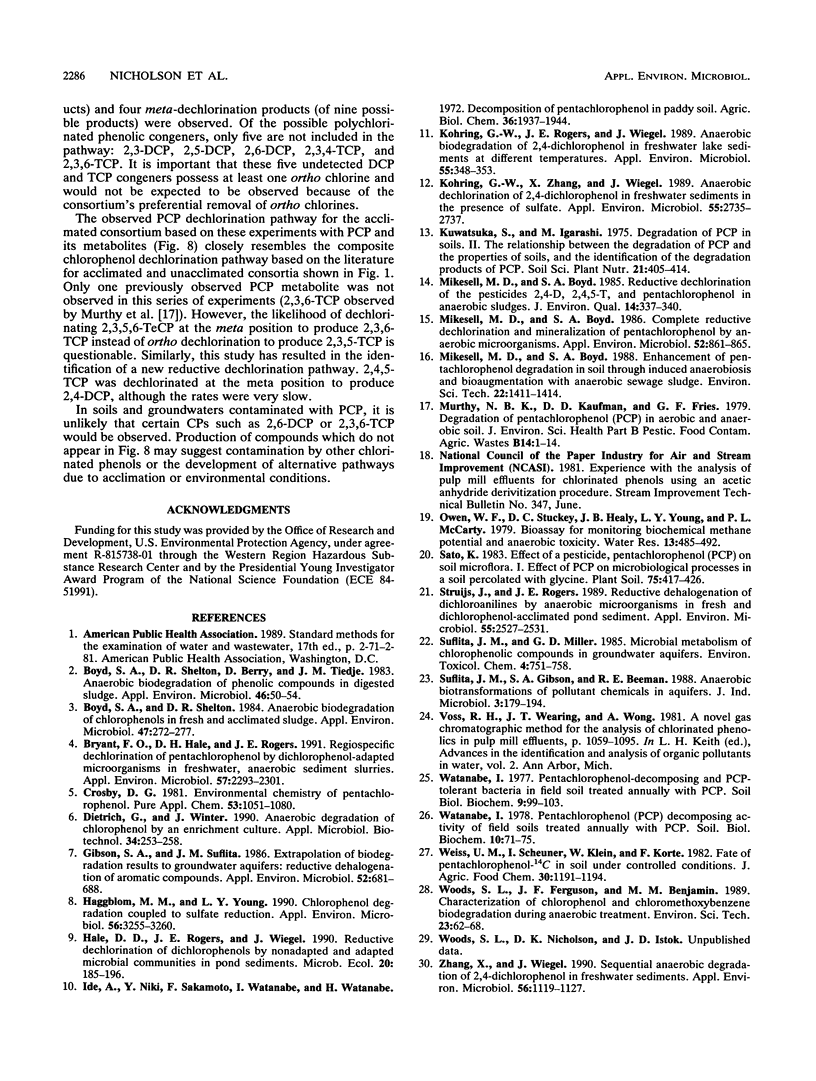
Selected References
These references are in PubMed. This may not be the complete list of references from this article.
- Boyd S. A., Shelton D. R. Anaerobic biodegradation of chlorophenols in fresh and acclimated sludge. Appl Environ Microbiol. 1984 Feb;47(2):272–277. doi: 10.1128/aem.47.2.272-277.1984. [DOI] [PMC free article] [PubMed] [Google Scholar]
- Boyd S. A., Shelton D. R., Berry D., Tiedje J. M. Anaerobic biodegradation of phenolic compounds in digested sludge. Appl Environ Microbiol. 1983 Jul;46(1):50–54. doi: 10.1128/aem.46.1.50-54.1983. [DOI] [PMC free article] [PubMed] [Google Scholar]
- Bryant F. O., Hale D. D., Rogers J. E. Regiospecific dechlorination of pentachlorophenol by dichlorophenol-adapted microorganisms in freshwater, anaerobic sediment slurries. Appl Environ Microbiol. 1991 Aug;57(8):2293–2301. doi: 10.1128/aem.57.8.2293-2301.1991. [DOI] [PMC free article] [PubMed] [Google Scholar]
- Gibson S. A., Suflita J. M. Extrapolation of biodegradation results to groundwater aquifers: reductive dehalogenation of aromatic compounds. Appl Environ Microbiol. 1986 Oct;52(4):681–688. doi: 10.1128/aem.52.4.681-688.1986. [DOI] [PMC free article] [PubMed] [Google Scholar]
- Häggblom M. M., Young L. Y. Chlorophenol degradation coupled to sulfate reduction. Appl Environ Microbiol. 1990 Nov;56(11):3255–3260. doi: 10.1128/aem.56.11.3255-3260.1990. [DOI] [PMC free article] [PubMed] [Google Scholar]
- Kohring G. W., Rogers J. E., Wiegel J. Anaerobic biodegradation of 2,4-dichlorophenol in freshwater lake sediments at different temperatures. Appl Environ Microbiol. 1989 Feb;55(2):348–353. doi: 10.1128/aem.55.2.348-353.1989. [DOI] [PMC free article] [PubMed] [Google Scholar]
- Kohring G. W., Zhang X. M., Wiegel J. Anaerobic dechlorination of 2,4-dichlorophenol in freshwater sediments in the presence of sulfate. Appl Environ Microbiol. 1989 Oct;55(10):2735–2737. doi: 10.1128/aem.55.10.2735-2737.1989. [DOI] [PMC free article] [PubMed] [Google Scholar]
- Mikesell M. D., Boyd S. A. Complete reductive dechlorination and mineralization of pentachlorophenol by anaerobic microorganisms. Appl Environ Microbiol. 1986 Oct;52(4):861–865. doi: 10.1128/aem.52.4.861-865.1986. [DOI] [PMC free article] [PubMed] [Google Scholar]
- Murthy N. B., Kaufman D. D., Fries G. F. Degradation of pentachlorophenol (PCP) in aerobic and anaerobic soil. J Environ Sci Health B. 1979;14(1):1–14. doi: 10.1080/03601237909372110. [DOI] [PubMed] [Google Scholar]
- Struijs J., Rogers J. E. Reductive dehalogenation of dichloroanilines by anaerobic microorganisms in fresh and dichlorophenol-acclimated pond sediment. Appl Environ Microbiol. 1989 Oct;55(10):2527–2531. doi: 10.1128/aem.55.10.2527-2531.1989. [DOI] [PMC free article] [PubMed] [Google Scholar]
- Zhang X., Wiegel J. Sequential anaerobic degradation of 2,4-dichlorophenol in freshwater sediments. Appl Environ Microbiol. 1990 Apr;56(4):1119–1127. doi: 10.1128/aem.56.4.1119-1127.1990. [DOI] [PMC free article] [PubMed] [Google Scholar]


